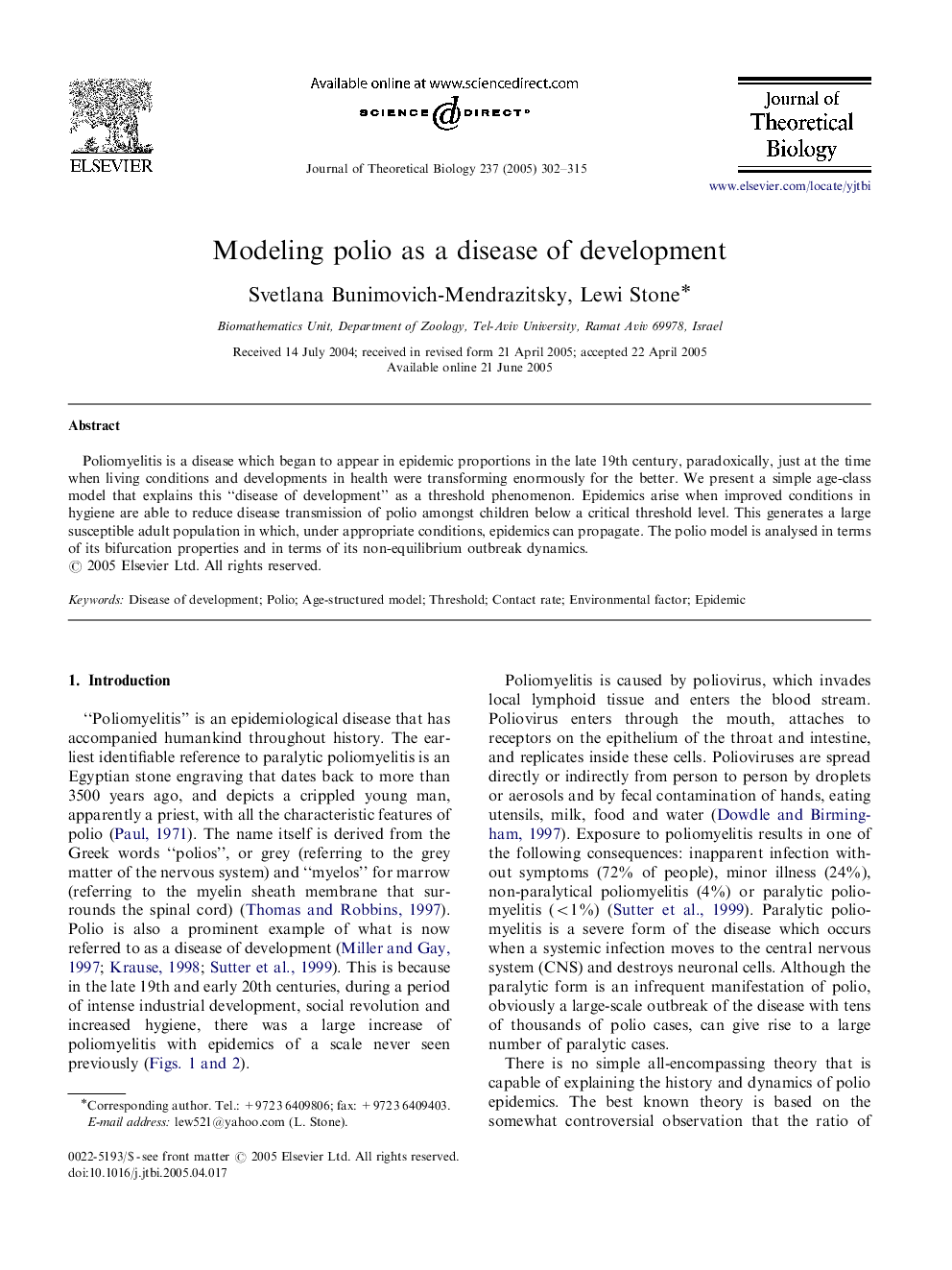| Article ID | Journal | Published Year | Pages | File Type |
|---|---|---|---|---|
| 9469613 | Journal of Theoretical Biology | 2005 | 14 Pages |
Abstract
Poliomyelitis is a disease which began to appear in epidemic proportions in the late 19th century, paradoxically, just at the time when living conditions and developments in health were transforming enormously for the better. We present a simple age-class model that explains this “disease of development” as a threshold phenomenon. Epidemics arise when improved conditions in hygiene are able to reduce disease transmission of polio amongst children below a critical threshold level. This generates a large susceptible adult population in which, under appropriate conditions, epidemics can propagate. The polio model is analysed in terms of its bifurcation properties and in terms of its non-equilibrium outbreak dynamics.
Related Topics
Life Sciences
Agricultural and Biological Sciences
Agricultural and Biological Sciences (General)
Authors
Svetlana Bunimovich-Mendrazitsky, Lewi Stone,
